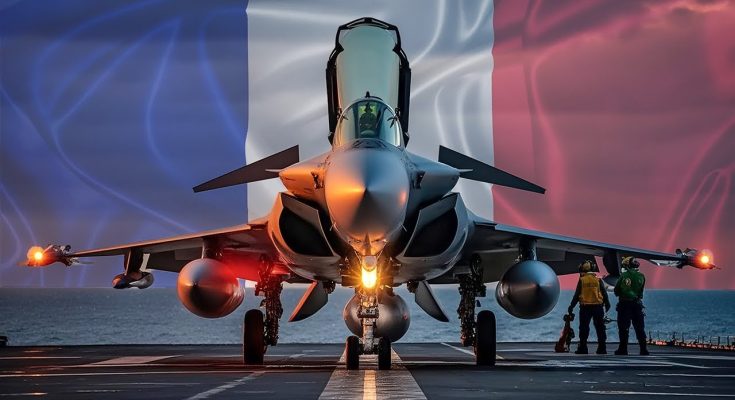The Secrets of the World’s Most Flexible Fighter Jet from France? Revealed!
When it comes to modern fighter jets, versatility is key. In an ever-changing landscape of aerial warfare, having an aircraft that can excel in a variety of combat situations is a massive advantage. Enter the Dassault Rafale, France’s pride and one of the world’s most flexible fighter jets. Its reputation for versatility and adaptability has earned it a place among the top multi-role fighters in the world. But what truly sets the Rafale apart from its competitors, and what are the secrets behind its unmatched flexibility? Let’s dive into the key features and capabilities that make the Rafale so remarkable.
A Multi-Role Marvel
The Dassault Rafale is a true multi-role fighter, designed to perform a broad range of missions, from air superiority to ground attack and anti-ship operations. What makes the Rafale unique is its ability to seamlessly transition between these roles with minimal modification. Whether it’s air-to-air combat, precision strike missions, or intelligence gathering, the Rafale excels in every domain.
Unlike some specialized aircraft that are built for a single mission, the Rafale can easily switch between offensive and defensive roles. Its advanced avionics and weapon systems allow it to engage in complex missions without compromising performance. This flexibility makes the Rafale an invaluable asset to the French Air Force and Navy, capable of responding to a variety of threats in diverse combat scenarios.
Cutting-Edge Avionics and Sensor Suite
At the heart of the Rafale’s flexibility is its sophisticated avionics and sensor suite. The fighter is equipped with the RBE2-AA radar, an active electronically scanned array (AESA) radar, which provides exceptional range and precision. This radar enables the Rafale to track and engage multiple targets simultaneously, even in cluttered environments.
Additionally, the Rafale uses an OSF (Optronique Secteur Frontal) infrared tracking system, which enhances its ability to detect and target enemies even in low-visibility conditions. This combination of radar and infrared sensors ensures that the Rafale is a formidable opponent in both day and night operations, giving it a distinct advantage in varied combat situations.
For electronic warfare, the Rafale is equipped with the SPECTRA system, a comprehensive suite of sensors and countermeasures that provide exceptional self-defense capabilities. This system includes radar warning receivers, jammers, and decoys, allowing the Rafale to protect itself from enemy radar and missile threats. With these advanced systems, the Rafale can operate with confidence in high-threat environments, ensuring its survivability even against advanced adversaries.
Impressive Weaponry and Payload Capacity
One of the most impressive aspects of the Rafale is its wide array of weapons and impressive payload capacity. The Rafale can carry a diverse range of ordnance, from air-to-air missiles like the Meteor and MICA to precision-guided bombs such as the AASM Hammer. The aircraft’s ability to carry multiple types of munitions, including nuclear weapons, further enhances its versatility. This makes the Rafale an ideal platform for missions ranging from conventional combat to strategic deterrence.
In addition to its impressive armament, the Rafale is designed to carry a significant payload, with the ability to carry up to 9,300 kilograms (20,500 pounds) of ordnance. This flexibility allows it to conduct long-range strikes, attack heavily defended targets, or carry out air-to-ground missions in support of ground forces. Its combination of weaponry and payload capacity gives the Rafale the ability to adapt to virtually any combat scenario.
Naval and Air Force Capability
Another key element of the Rafale’s flexibility is its ability to operate from both land-based airfields and aircraft carriers. The Rafale M, the naval variant of the aircraft, is specifically designed for carrier operations. Its rugged landing gear and reinforced airframe allow it to withstand the harsh conditions of carrier-based operations, while its advanced navigation systems ensure precision even in challenging maritime environments.
The dual-service capability of the Rafale significantly enhances its value for the French military, as it allows for seamless integration between the Air Force and Navy, ensuring interoperability during joint operations. This adaptability is something that few other fighter jets can boast.
Outstanding Agility and Maneuverability
The Rafale’s airframe design and control systems contribute to its exceptional agility and maneuverability. It features an advanced digital fly-by-wire system that provides the pilot with precise control in all flight conditions. Combined with the aircraft’s delta wing design, the Rafale is capable of high levels of agility, making it highly effective in dogfights and close-range combat.
Its agility is also complemented by its low radar cross-section, which enhances its survivability in contested airspaces. This combination of stealth, agility, and advanced avionics makes the Rafale one of the most well-rounded fighters in existence.
The Future of the Rafale
The Rafale continues to evolve with constant upgrades to its systems, weapons, and performance. With the addition of new features like the Talios targeting pod and further integration with European missile defense systems, the Rafale remains at the forefront of modern air combat.
Its export success, with countries such as India, Qatar, Egypt, and Greece purchasing the fighter, speaks volumes about its versatility and combat readiness. The Rafale’s adaptability ensures that it will remain a key player in global military aviation for many years to come.
Conclusion
The Dassault Rafale is truly the world’s most flexible fighter jet, offering a combination of cutting-edge technology, unmatched versatility, and exceptional performance. Its ability to seamlessly transition between different combat roles, coupled with its advanced avionics, sensors, and weaponry, makes it one of the most formidable multi-role fighters in the world today. Whether it’s defending national airspace, supporting ground forces, or executing strategic strikes, the Rafale is ready for any challenge, securing its place as one of the most capable fighter jets in modern warfare.



